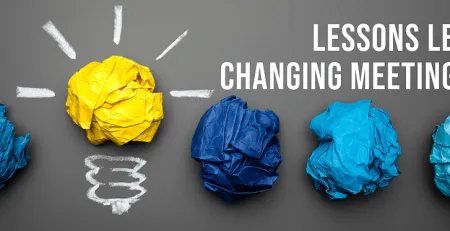I recently had the honor of sitting down to interview Randy Manner (Ret.), a former senior military officer turned Executive Leadership Coach. For over three decades, he served in a variety of positions in the Pentagon and around the world. Prior to retiring from the Army as a Major General, he served as the Deputy Commanding General of the United States 3rd Army in Kuwait, as the Acting Vice Chief of the National Guard Bureau, and as the Acting and Deputy Director of the Defense Threat Reduction Agency. He facilitated the withdrawal of US forces from Iraq, helped neutralize chemical weapons in Russia, oversaw investments in biological prophylactic research on deadly pathogens, to include Ebola, and helped coordinate military emergency response support to States during natural disasters.
Resilience has been and still is an integral part of Randy’s life and career. He coaches executives as they transition to more senior levels, mentors business leaders in improving their value propositions to their clients, and coaches senior military officers on leadership, ethics, and transition from service to our country.
I asked Randy the following questions:
Can you define in your own terms what Resiliency is?
(a) Resiliency is the ability of an individual or team to bounce back or sustain performance while encountering difficult challenges and situations. It doesn’t have to be one specific event. It can also be the ability to endure, over time, trying circumstances.
How is Resiliency a big part of your job?
(a) Resilience is a fundamental and critical component of military service in addition to helping organizations to meet the challenges of continuous competition in the commercial, non-profit, sports, and academic marketplaces.
What is the difference between Hardiness & Grit?
(a) Hardiness and Grit are both components of Resiliency. Hardiness is the degree to which an individual or team can meet extreme challenges and perform in a very calm, cool, and collected manner and keep striving toward their goal. People who are “hardier” are typically able to stay healthy under stress in comparison to some who may develop stress-related challenges. Hardy people tend to be flexible and adaptable to changing conditions. They usually are ability to stop, evaluate and change direction when needed. Grit is the focus and dedication needed to accomplish tasks. It’s the ability of the individual or team to overcome significant obstacles to accomplish goals.
Can you give an example of resiliency done well and done sub-optimally?
(a) An organization that has a concept of resiliency built into its culture will provide a higher order of performance. In the military, the concept of resiliency is part of the culture. It is integrated in training all throughout a person’s career from the first day. As a result of long term and sustained military operations in the initial years after 9-11, the critical importance of resiliency gained increased attention and value to help to militate the impact that repeated deployments had on service members and their families. To help reduce the number of stress related issues like PTSD, the Army created a Readiness and Resilience campaign that in many cases includes family members.
Does courage and confidence play a part?
(a) Courage means so many different things to different people. There are single acts of courage and then there is being courageous on a constant basis. To me, courage is doing what is right when no one is looking and overcoming obstacles to ensure the team gets across the finish line together. Confidence deals with self-image. Confidence in the team is a measure of how certain it is that we are going to succeed. Confidence is a reflection of a strong belief in three things: oneself, leadership of the team, and one’s teammates.
Do you think Resiliency can be developed?
(a) 100% yes. There are many ways depending on the desired outcomes. The Army’s desired outcomes of increasing Resilience were to increase the ability of its Soldiers to deal with long term stress and reduce the time it took Soldiers to recover from mental and physical wounds, injuries, and challenges. For businesses, sports teams and other organizations, high performance is also the desired outcome —particularly under difficult and adverse conditions.
What are some ways leaders can promote hardiness in the people around them?
(a) The first thing to do is to increase awareness in individuals and teams of what resiliency means. One technique is to administer the Hardiness Resilience Gauge (HRG) so that people can begin to understand the 3 C’s of Resilience. This instrument measures three scales or qualities that comprise a person’s hardiness level: Challenge, Control, and Commitment. Challenge is about taking a risk and putting yourself out there. Control is your belief in your ability to influence outcomes. Commitment is about purpose and believing that what you spend your time on truly matters. The second thing would be to clearly identify what your desired outcomes in business are for having resiliency be a part of your culture. The third component would be to identify metrics and measure your progress toward your desired goals. Lastly, it is very important to understand there are no “quick fixes” to integrate a resiliency program into your culture.
Can you overuse hardiness?
(a) Yes. If you are very hardy, but your team members do not share the same level of hardiness, there is the potential that the team could be driven into the ground or fail because the leader expected far more than the team was able to deliver. Higher than expected personnel turnover, use of sick leave, absenteeism, and HR complaints are some of the indicators of poor leadership and/or low levels of resiliency in a team. Someone with low self-awareness of their impact on others and extremely high scores on the 3 C’s of Challenge, Control, and Commitment could very well result in a negative impact. Hardiness is best used as a protective factor against stress when all 3 scores are in the mid-high range and balanced with each other.
Interested in learning more about the 3 C’s of resilience? Click here to request a look inside the HRG.










